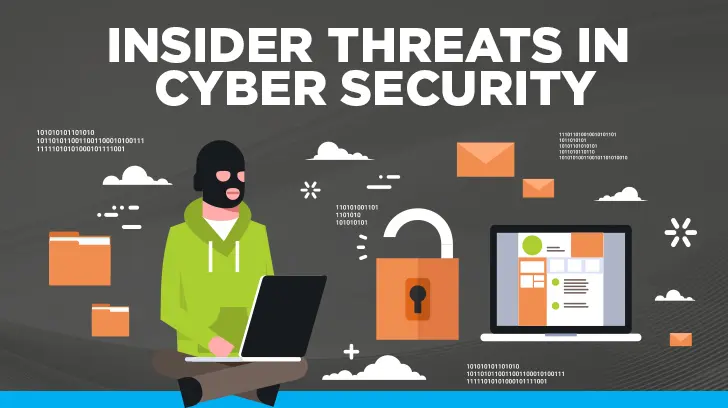How To Protect Your Organisation From Insider Threats
Insider threats come from individuals within the organization, such as employees, contractors, or partners, who have inside information concerning its security practices, data, and computer systems. Here are steps to protect your organization from such threats:
1. Implement Strong Access Controls
- Least Privilege Principle: Ensure that individuals have only the minimum levels of access – or permissions – needed to perform their job functions.
- Regular Access Reviews: Provide ongoing assessments and audits of who has access to sensitive data and why.
2. Conduct Background Checks
- Pre-Employment Screening: Verify the backgrounds of potential employees, especially for those in positions with access to sensitive information.
- Ongoing Monitoring: Conduct periodic checks to reveal any potential issues that might influence an employee’s risk profile.
3. Use User and Entity Behavior Analytics (UEBA)
- Anomaly Detection: Leverage AI and machine learning to detect abnormal behaviors that could indicate a threat.
- Continuous Monitoring: Implement solutions that continuously monitor user activities and access patterns to identify potential risks.
4. Secure Physical Assets
- Restrict Physical Access: Ensure that sensitive areas, like server rooms, are accessible only to authorized personnel.
- Visitor Management: Keep track of all visitors and ensure they are accompanied by authorized staff at all times.
5. Employ Data Loss Prevention (DLP) Tools
- DLP Software: Use DLP tools to monitor, detect, and block potential data exfiltration attempts across the network, in the cloud, and at endpoints.
6. Establish a Comprehensive Security Policy
- Clear Guidelines: Develop and distribute policies detailing acceptable use of company data and equipment.
- Up-to-date Procedures: Regularly update security policies in accordance with evolving threats and business practices.
7. Integrate Endpoint Protection Solutions
- Device Management: Install security software on all devices to monitor and protect against unauthorized access and malware.
- Patch Management: Ensure that all software is kept current with the latest security patches.
8. Monitor Networks and Systems
- Intrusion Detection Systems (IDS): Deploy IDS to detect and report on malicious activities.
- Log Management: Use centralized log management solutions for early detection of suspicious activities.
9. Train Employees on Security Best Practices
- Regular Training: Conduct ongoing cybersecurity training and awareness programs to educate employees about common insider threats and how to avoid them.
- Phishing Simulations: Use controlled phishing simulations to teach employees how to recognize social engineering attacks.
10. Establish an Insider Threat Program
- Dedicated Team: Form a team that focuses on identifying, assessing, and mitigating insider threats.
- Cross-Department Collaboration: Ensure that the program includes input and cooperation from HR, IT, legal, and security departments.
11. Create an Incident Response Plan
- Clear Procedures: Should a threat be detected, having a defined plan will allow for a quick and calculated response.
- Practice Drills: Regularly practice your incident response to ensure all members know their roles and responsibilities in case of an actual event.
12. Foster a Positive Work Environment
- Employee Engagement: Dissatisfied employees can pose a higher risk; keeping morale high can reduce insider threat risks.
- Whistleblower Policies: Encourage and protect employees who report suspicious behavior by their colleagues.
Conclusion
Protecting against insider threats requires a mix of technical controls, policies, and processes, along with an organizational culture that values security and transparency. Understanding the motivations behind insider threats, whether malicious intent, negligence, or accidental error, is key to developing effective prevention strategies. Regularly evaluating and adjusting your approach based on new insights and industry best practices will further strengthen your stance against insider threats.
How To Protect Your Organisation From Insider Threats in Cybersecurity

Insider threats are one of the most challenging cybersecurity issues facing organizations. Protecting against these threats requires a mixture of technology, processes, and education. Here are steps your organization can take:
1. Foster a Culture of Security Awareness
- Regular Training: Implement ongoing security awareness training to keep staff informed about the latest threats and the importance of cybersecurity.
- Engagement: Create opportunities for employees to engage with security teams, such as Q&A sessions or security workshops.
2. Establish Clear Security Policies
- Acceptable Use Policy: Clearly define what is considered acceptable and safe behavior when using company resources.
- Data Handling Policy: Outline procedures for handling sensitive information to prevent accidental leaks or misuse.
3. Tighten Access Control
- Role-Based Access Control (RBAC): Grant permissions based solely on the minimum required for a user to perform their job function.
- Periodic Access Reviews: Conduct regular reviews and audits of user access and privileges and adjust them as necessary.
4. Monitor and Manage User Behavior
- User and Entity Behavior Analytics (UEBA): Deploy advanced monitoring solutions that analyze user behavior and identify anomalies that could indicate threats.
- Monitor User Actions: Use logging and monitoring tools to track actions taken on sensitive systems or information.
5. Enhance Endpoint Security
- Secure Endpoints: Ensure endpoint security solutions like antivirus and anti-malware are installed and updated on all devices.
- Device Control: Implement device control to manage the use of USB and peripheral devices that could be used to exfiltrate data.
6. Implement Data Loss Prevention (DLP) Techniques
- DLP Software: Employ DLP tools to detect and prevent unauthorized attempts to move or copy sensitive data outside the organizational network.
- Encryption: Ensure that sensitive data is encrypted both in transit and at rest.
7. Employ Intrusion Detection and Prevention Systems (IDPS)
- Network Monitoring: Use IDPS to continuously monitor network traffic for signs of suspicious activity that might indicate an insider threat.
8. Manage Third-Party Risks
- Vetting Vendors: Assess security practices of third-party vendors who have access to your systems.
- Contractual Protections: Include security requirements and breach notification clauses in contracts with third parties.
9. Plan for Incident Response
- Response Plan: Have a robust incident response plan that includes procedures for dealing with insider threats.
- Simulation Exercises: Conduct regular tabletop exercises or simulations to ensure the response plan is effective and well-understood.
10. Utilize Separation of Duties and Least Privilege
- Duties Separation: Divide responsibilities among different individuals to reduce the risk of inappropriate actions going unnoticed.
- Least Privilege: Apply the least privilege principle rigorously to minimize each user’s exposure to sensitive systems and data.
11. Secure the Physical Workspace
- Access Controls: Implement badge access systems or other means to restrict physical access to sensitive areas.
- Visitor Management: Ensure there is a policy for escorting visitors and logging their movements.
12. Encourage Open Communication
- Whistleblower Support: Provide secure and confidential ways for employees to report suspicious behavior without fear of retaliation.
Conclusion
Protecting against insider threats entails a combination of preventive and detective measures. It requires vigilance and a multi-faceted approach, involving technology solutions, strict policies, and an educated workforce that understands the role it plays in maintaining cybersecurity. Regular review and adjustments will keep the protective measures aligned with the evolving threat landscape.


 Dome CCTV Cameras
Dome CCTV Cameras Bullet CCTV Cameras
Bullet CCTV Cameras Day & Night CCTV Cameras
Day & Night CCTV Cameras C-Mount CCTV Cameras
C-Mount CCTV Cameras

